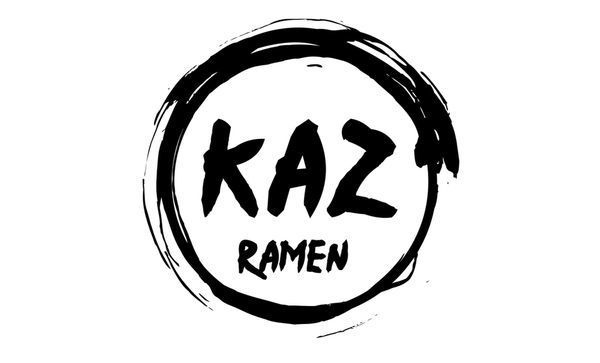Businesses Take Advantage of COVID Compliant Business Program
Early on, the County launched its COVID Compliant Business Partnership Program to help provide funds for businesses working hard to comply with State and County Health orders and direction. In many ways the funding of $2,500 for eligible small businesses has done more than just provide dollars to invest in PPE support, it has also helped keep people employed and ensure day-to-day business operations.
In this issue we talked to one of our partners in the county. If you are a small business in the county that could use extra funding to support compliance, apply for the program at www.sbcovid19.com. Eligible businesses can receive funding of $2,500 for the first business location and another $1,000 for each additional qualifying location. Deadline for application is August 31, 2020.
 Kaz Ramen is Latest COVID-Compliant Business Partner
Kaz Ramen is another one of our COVID Compliant Business Partners located in Grand Terrace, they are one of the first authentic Japanese ramen shops in the Inland Empire, specializing in bringing authentic Japanese flavors and ingredients to the region. Although they closed their dine-in option, Kaz Ramen now provides to-go meals and delivery 24/7.
Ricky Komorida, Raz Kamen co-founder, shared that they used the funds from the program to support labor costs and day-to-day operation of the restaurant. One of the best tools is the marketing graphic. They proudly post their COVID-Compliant window decal to advise customers and employees alike of their commitment to safe practices inside their facility. Ricky remains positive about business and is happy to see his customers each day.
Restaurant Readiness – Free Webinar on July 23
Calling all restaurant owners! Tomorow, July 23 from 10 a.m. to 11 a.m., the San Bernardino County Economic Development Department in collaboration with the California Restaurant Association will hold a free webinar covering restaurant and food service reopening best practices.
The panel features local restaurant owners Ray Villaman, owner, Tahoe Restaurant Group; Dave Wetzel, president and COO, Farmer Boys; and Chris Duggan, director of local government affairs for the California Restaurant Association (San Diego, Imperial, Riverside, and San Bernardino counties). The webinar will cover best practices for in-door dining closure, alternative dining options, marketing, and more. Registration is free:
https://www.selectsbcounty.com/events/restaurant-and-food-service-reopening-rollback-best-practices-q-a-webinar
Market Experts Share Perspective on Office and Industrial
There is no doubt that the coronavirus has taken a toll on business. National real estate firms Newmark Knight Frank and JLL recently released their second quarter market reports for office and industrial real estate. The reports tell two stories – the toll on the office market and the increasing opportunities in industrial.
Office Market Hit By COVID Slowdown
Workplace shutdowns have taken a toll on the Inland Empire office market as noted by Newmark Knight Frank (NKF) in its second quarter of 2020 Office Market report. San Bernardino County is allowing office-based businesses to resume pending approval of workplace reopening plans. Public health officials and business leaders are still recommending that employees work from home whenever possible, which has dampened plans for new or expanded offices.
NKF further states that the recovery for the office market depends on public sentiment, whether employers and employees feel comfortable returning to traditional office workplaces and if new cases of coronavirus increase, which would lead to more economic uncertainty. A decrease in coronavirus patients is also necessary for the region’s healthcare providers to recover, as emergency treatment of COVID-19 patients displaces traditional client care, the industry’s main source of revenue.
As NKF notes, all of the sectors that drive office demand in the region have been impacted by varying degrees: healthcare, education, government agencies, and real estate. The region’s role as a logistics hub does offer some resilience for the industrial sector, which will help support the economy during a period that has officially become a recession.
Big Box Demand Keeps the Region’s Industrial Market Going
According to JLL, the Inland Empire posted its 14th consecutive quarter of positive industrial absorption in the second quarter, as other major West Coast markets witnessed negative absorption due to a slowing economy. Absorption is the way commercial real estate investors gauge tenant demand and is measured in square footage.
With physical retail severely disrupted by coronavirus guidelines, there has been a sharp pivot in consumer behavior in favor of shopping online especially over the past three months. This has left major e-commerce dependent companies searching for class A industrial buildings to manage the increased demand on their supply chains to better meet customer demand.
Construction activity remains elevated across the Inland Empire. Developers appear confident that industrial product will still be very much in demand despite a slowing economy, as e-commerce and online shopping have accelerated and are heavily dependent on having product in warehouses in close proximity to the millions of consumers throughout Southern California.
Looking forward, a significant test of big box demand in the Inland Empire is ahead, as more than four million square feet of product is expected to deliver in the third quarter. Assuming this product leases rapidly, JLL expects to see developers ramp up their activity in short order.
 How Public Transportation Agencies are Protecting Riders
As businesses and organizations see at least partial reopening, many County residents will look to buses and trains as their primary means of transportation. It’s important for community members to remain cautious when traveling and fortunately, Omnitrans, Mountain Transit, and Metrolink are taking steps to help mitigate the spread of COVID-19.
While these organizations have all instituted a variety of common precautions -- such as requiring riders and drivers to wear a face covering -- we wanted to share some additional measures each service is taking to try and ensure your safety.
Serving the San Bernardino Mountain communities, Mountain Transit has transitioned its services to be as contactless as possible, and they strongly recommend carrying exact change to reduce the amount of currency you touch during your transaction. In addition, high-touch areas are routinely cleaned throughout service. Prior to your next trip, the agency encourages residents to download its Mountain Transit DoubleMap app that allows community members to track their bus in real time. Many line schedules have recently been affected by low ridership, so be sure to visit the agency’s website to find up-to-date schedules.
Omnitrans’ bus network has implemented new procedures and changes to provide a safe ridership experience to residents. The agency installed Plexiglas barriers and developed contactless fare options to reduce exposure between drivers and riders. Informational signs have been posted reminding riders to practice social distancing, wear a face mask, and use the newly installed hand sanitizer stations aboard the bus. Omnitrans also routinely deep cleans the inside of all of its buses with electrostatic sprayers. These devices penetrate hard-to-reach surfaces with positively charged particles that aggressively adhere to surfaces and objects. These particles coat the surface while the sanitizing agent disinfects it. Be sure to visit the Omnitrans website for updated bus schedule changes.
Metrolink’s cross-county train service has also implemented significant safety improvements in the fight against COVID. Each car is equipped with two hand sanitizer stations, face covering signage, and social distancing reminders. In addition, nightly deep cleaning is performed with electrostatic sprayers to disinfect all high touch surfaces.
As part of Metrolink’s effort to improve its online social distancing tools, the rail system strongly recommends pre-purchasing tickets online via their website, or on their mobile app. Metrolink has also recently implemented a new social distancing tool called How Full is My Train. This web feature allows you to check the recent ridership of your train and confirm there’s adequate room for social distancing. More safety improvements can be found on the Metrolink website, along with any relevant scheduling changes that may affect your next ride.
When using any type of public transportation, it’s important to remain cautious. The Center for Disease Control website provides additional recommendations for staying safe when using public transit and other forms of transportation.




Latest Stats
25,775 Confirmed Cases (up 2.8% from the previous day)
337 Deaths (up 1.2% from the previous day)
217,148 Tested (up 2.4% from the previous day)
For more statistics from the COVID-19 Surveillance Dashboard, click the desktop or mobile tab on the County’s sbcovid19.com website.


|